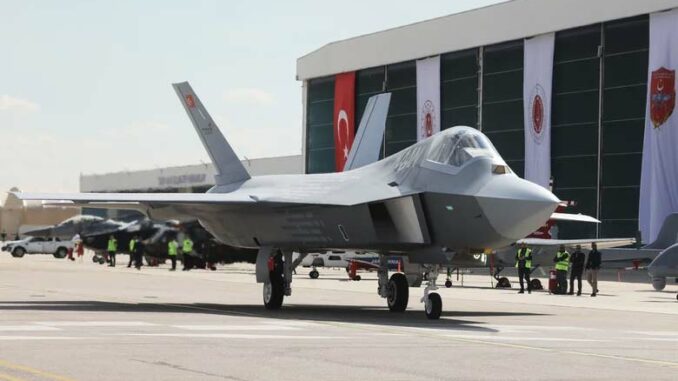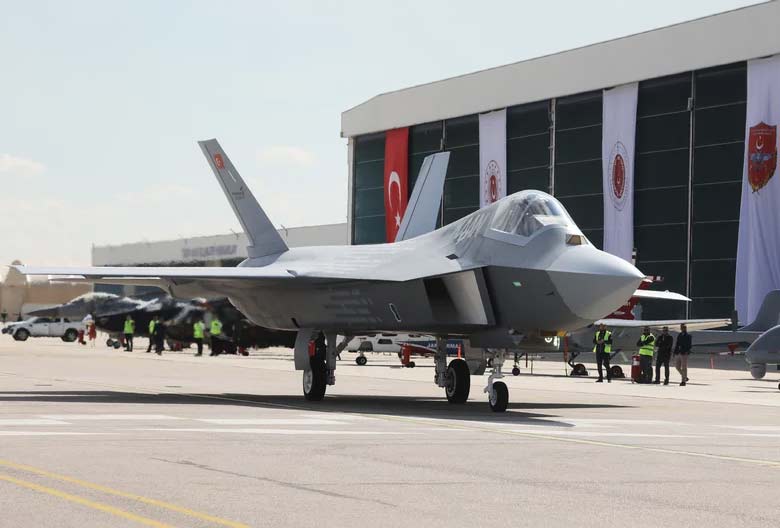
The development of the Turkish TF-X, an indigenous fighter aircraft, marks a key step in Turkey’s air defense strategy.
The Turkish TF-X, a promising fighter for the future
In June 2019, Turkish Aerospace Industries (TAI) unveiled a full-scale model of the TF-X, its indigenous fighter aircraft, at the Paris Air Show. Known as the Milli Muharip Ucak (MMU) or National Combat Aircraft program, the TF-X prototype is an essential component of Turkey’s air defense strategy. Temel Kotil, president and CEO of main contractor Turkish Aerospace, told Aviation International News (AIN): “We have promised our nation that this will be the best fighter in Europe.” The first flight of the TF-X, originally scheduled for 2025, has been postponed to 2028.
The TF-X could meet Turkey’s air combat needs until 2070, with Pakistan, Bangladesh, Indonesia and Kazakhstan as potential partners or buyers. In November 2022, AA shared images of the TF-X under construction in Ankara. The TF-X, which was not yet operational, successfully completed its taxi tests on the Ankara runway on March 16. Designed to replace the Turkish Air Force’s fleet of F-16s, the TF-X is expected to have intensive stealth and attack capabilities, weighing 27,215 kg and measuring 12 meters long with a 12-meter wingspan. Rolls-Royce and Kale Group were initially scheduled to develop the engine, but the project fell through due to uncertainties over technology transfer.
In December 2023, Turkey requested permission from the USA to build General Electric (GE) Aerospace engines under license for its indigenous aircraft until it could replace them with locally produced engines. In addition to the TF-X, TAI also unveiled other technologies, such as the Anka-3 stealth drone and the Hürjet supersonic trainer and ground attack aircraft.

Geopolitical and strategic implications of the TF-X
Turkey’s development of the TF-X is a direct response to its exclusion from the F-35 Joint Strike Fighter (JSF) program in 2019, following its purchase of the Russian S-400 air defense system. This decision cost the United States around half a billion dollars and affected several Turkish subcontractors. However, Turkey’s experience with the F-35 program has contributed to its ambition to produce an “all indigenous” fighter jet. The independent manufacture of military fleets is becoming a necessity for countries with the capacity to do so, in an increasingly complex political and military context.
The TF-X is a symbol of the independence and growing power of the Turkish defense industry, demonstrating its ability to develop advanced technologies and free itself from external dependencies. The success of the TF-X program could strengthen Turkey’s position as a regional military power and defense supplier, while altering the geopolitical balance in the region.
Turkey’s development of the TF-X represents a significant advance in its defense autonomy, and symbolizes a geopolitical shift in relations with Western powers, particularly the United States.
War Wings Daily is an independant magazine.